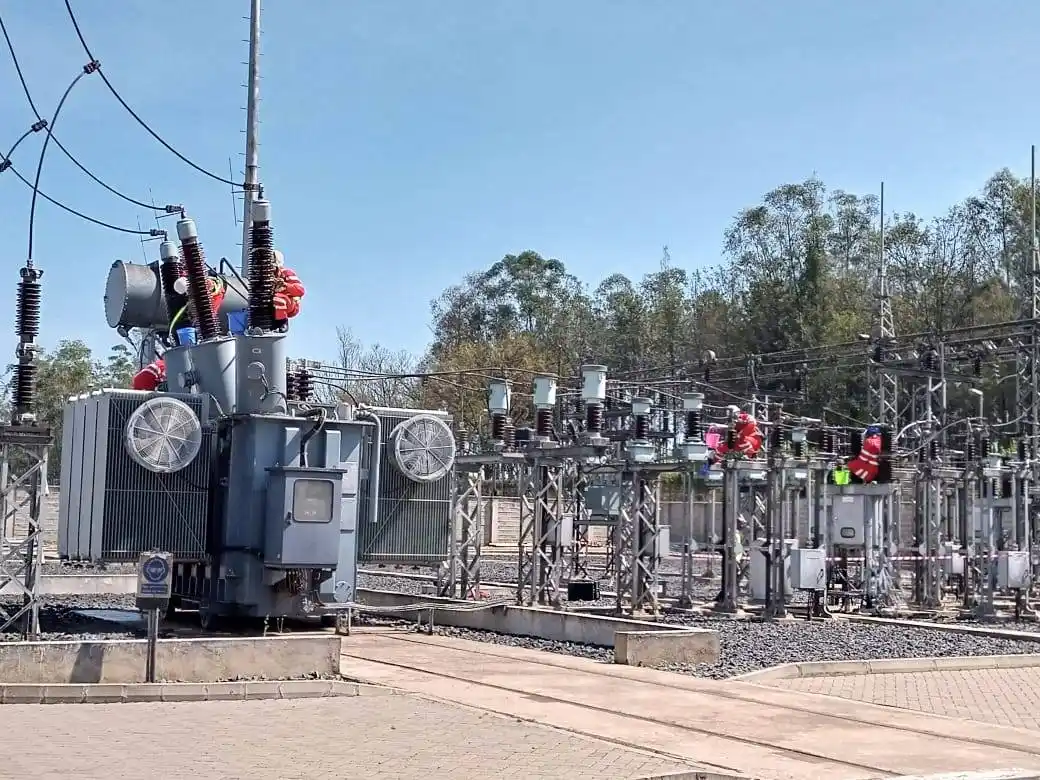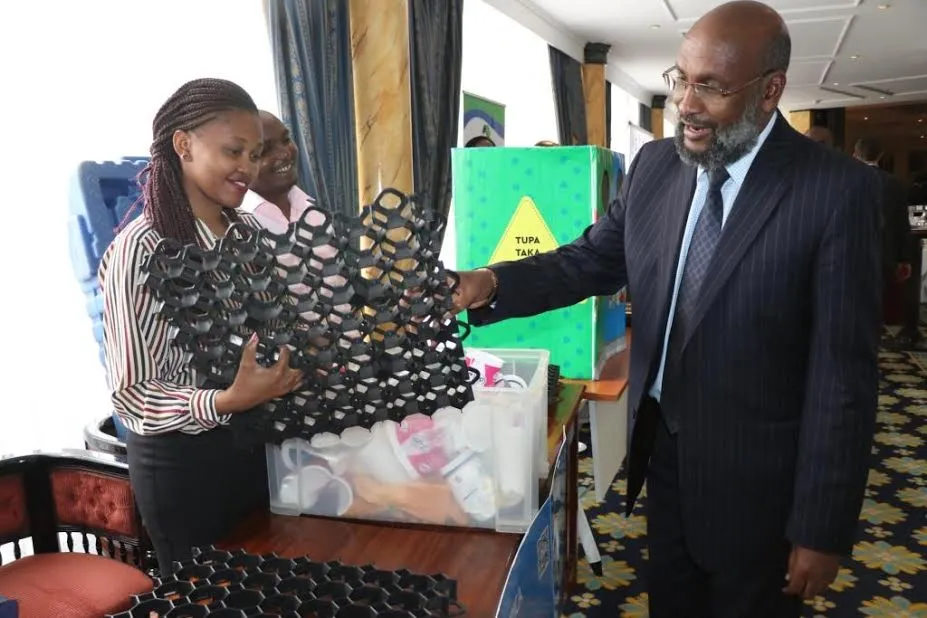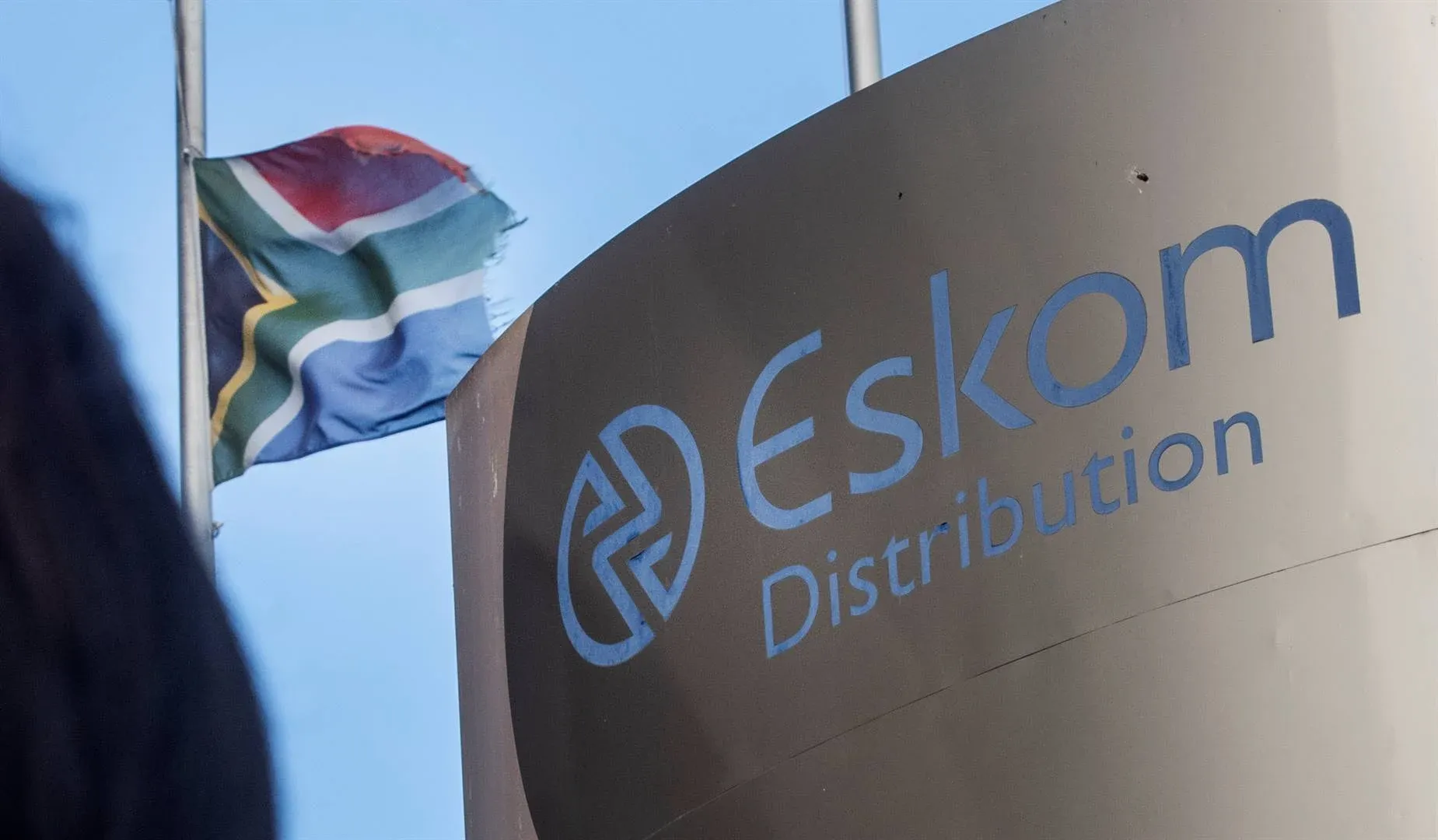Kenya’s electricity sector has reached a critical juncture as the nation recorded unprecedented peak demand of 2,411.98 megawatts (MW) and the highest-ever daily energy consumption of 44,122.60 megawatt-hours (MWh) on Friday, October 24, 2025. This milestone, while indicative of robust economic growth and expanding electricity access, has simultaneously exposed a concerning vulnerability in Kenya’s power infrastructure: dangerously thin reserve margins that threaten grid stability and the nation’s energy security.
Build the future you deserve. Get started with our top-tier Online courses: ACCA, HESI A2, ATI TEAS 7, HESI EXIT, NCLEX-RN, NCLEX-PN, and Financial Literacy. Let Serrari Ed guide your path to success. Enroll today.
The Reserve Margin Crisis: A Looming Challenge
According to the latest figures from the Energy and Petroleum Regulatory Authority (EPRA) dated September 2025, Kenya maintains an installed capacity of 3,846.80MW. With peak demand reaching 2,411.98MW, the country operates with a reserve of approximately 434.82 MW—representing just 11.3% of installed capacity. This figure becomes even more alarming when accounting for the intermittent nature of renewable energy sources.
Excluding solar power, which is inherently unreliable during nighttime hours and constitutes 14.12% of Kenya’s installed power capacity (514.1MW), the effective operational reserve margin shrinks to approximately 480 MW during evening peak demand periods. This razor-thin cushion leaves Kenya’s grid vulnerable to cascading failures, particularly during equipment maintenance, unexpected plant outages, or periods of low renewable energy generation.
“This situation demands immediate and substantial investment in electricity generation to bolster our spinning reserves and secure Kenya’s energy future, vital for its economic and social development,” emphasized Emmanuel Wandera, an Energy Communications Specialist, in his analysis of the current power situation.
The Rainy Season Paradox: Solar Limitations Exposed
The vulnerability of Kenya’s power system has become particularly evident during the current rainy season, when frequent power blackouts have become a daily occurrence. The solar energy component, which represents 514.1MW or 14.12% of Kenya’s installed power capacity, experiences significantly reduced output during overcast conditions and extended periods of rainfall. This weather-dependent variability in solar generation has placed additional strain on other power sources to compensate for the shortfall, highlighting the critical importance of baseload power generation capacity.
The seasonal nature of this challenge underscores a fundamental issue in Kenya’s energy mix: while renewable sources provide clean and sustainable energy, their intermittency requires robust backup capacity or energy storage systems to ensure grid stability. Currently, Kenya lacks sufficient battery energy storage systems (BESS) to smooth out these fluctuations, making the grid heavily dependent on dispatchable power sources like geothermal, hydro, and thermal plants.
Alarming Growth Trajectory: Demand Outpacing Supply
The surge in electricity demand represents more than just a momentary spike—it reveals a sustained and accelerating trend that poses significant planning challenges for Kenya’s energy sector. Earlier in 2025, the country recorded a peak demand of 2,316 MW on February 12, following closely on the heels of a 2,043 MW peak demand in January. The progression from 2,043 MW in January to 2,411.98 MW in October represents an increase of approximately 368 MW in just ten months—an unprecedented growth rate that has caught many energy planners off guard.
“This rapid increase underscores a troubling reality: our energy reserves are dwindling,” Wandera noted. “To put it simply, the country’s ‘reserve,’ which is the difference between the generation capacity available and the highest recorded peak demand, is shrinking fast.”
Data from Kenya Power’s National Control Centre shows that peak electricity demand has been steadily growing over the last three years, with the growth rate gaining significant momentum in 2024. Electricity demand exceeded the 2,000 MW threshold toward the end of 2021 and peaked above 2,100 MW in 2022, but remained steadily below 2,200 MW in 2023 before regaining momentum in June 2024. Projections indicate that electricity demand could rise by 6.5% annually from 2025 to 2027, placing enormous pressure on the existing infrastructure.
Kenya’s Energy Mix: Renewable Dominance with Critical Gaps
Kenya has established itself as a regional leader in renewable energy deployment, with approximately 90% of its electricity generated from clean sources. Geothermal forms the largest share of the country’s installed electricity capacity at 943.7MW or 25.92%, followed by hydropower with 872.6MW (23.97%), thermal generation at 627.1MW (17.22%), solar at 514.1MW (14.12%), wind at 436.1MW (11.98%), bioenergy at 163.8MW (4.50%), and imports accounting for 200MW.
This impressive renewable energy portfolio positions Kenya among the global leaders in clean electricity generation. The country ranks as the seventh-largest geothermal producer globally, with geothermal accounting for nearly half of the country’s total energy production. Kenya’s geothermal success story is centered in the Great Rift Valley, where the Olkaria geothermal complex has been developed over several decades to become one of the largest geothermal installations globally.
KenGen: The Backbone of Kenya’s Power Generation
Kenya Electricity Generating Company (KenGen) remains the main green power supplier, contributing the lion’s share of the country’s total energy mix through geothermal and hydropower generation, which together account for over 53% of all electricity generated. During the record-breaking October demand period, KenGen’s performance was exemplary: geothermal stations produced 12,787MWh, exceeding dispatch projections by 5.07%, while its hydropower plants generated 9,871MWh, 3.23% above target.
“KenGen’s consistent renewable generation continues to anchor Kenya’s grid reliability and reduce reliance on expensive thermal power, aligning with national climate goals,” said KenGen Managing Director and CEO, Eng. Peter Njenga.
Today, KenGen PLC maintains an installed generation capacity of 1,786 MW, of which approximately 90% is drawn from green sources: hydro (826 MW), geothermal (754 MW), and wind (25.5 MW), with the balance from thermal sources. The company commands a market share of more than 60% in Kenya’s electricity sector, operating 32 power plants across the country.
The record demand comes as KenGen advances its green energy expansion strategy and optimization of existing assets under the ongoing Generation to Greatness (G2G) 2034 strategy. “This growth in power demand is a strong indicator of Kenya’s economic rebound and the success of our long-term investments in sustainable generation,” said Eng. Njenga.
Geothermal: Kenya’s Crown Jewel and Future Hope
Kenya is uniquely positioned to leverage baseload energy through its vast geothermal resources. The country possesses an estimated geothermal potential of 10,000 MW along the Great Rift Valley, though only about 943.7MW has been exploited thus far—less than 10% of the total potential. This untapped resource represents Kenya’s most promising pathway to addressing the current capacity shortage while maintaining its commitment to clean energy.
Geothermal power plants operate continuously, providing the constant baseload power supply that homes and industries need, regardless of weather conditions. Unlike solar and wind energy, geothermal generation is not subject to daily or seasonal variations, making it an ideal anchor for grid stability. The technology can operate at maximum power output up to 90% of the time when accounting for maintenance downtime.
The development of Kenya’s geothermal sector has been supported by substantial international investment. KenGen has announced plans for a $1.8 billion geothermal expansion, targeting additional production, monitoring, and reinjection wells that will connect to existing and new geothermal power plants. This expansion is expected to receive funding from partners including the World Bank, European Investment Bank, African Development Bank, and the Japan International Cooperation Agency.
Major projects include Olkaria I through V, with capacities ranging from 105 MW to 158 MW each. The most recent addition, Olkaria V, became operational in 2019, adding 158 MW of clean baseload capacity to the national grid. The Olkaria complex, located approximately 100 kilometers northwest of Nairobi in Hell’s Gate National Park area, represents one of the largest geothermal developments globally and serves as a model for other African nations exploring geothermal energy.
One decision can change your entire career. Take that step with our Online courses in ACCA, HESI A2, ATI TEAS 7, HESI EXIT, NCLEX-RN, NCLEX-PN, and Financial Literacy. Join Serrari Ed and start building your brighter future today.
Hydropower: Climate Vulnerability and Seasonal Variability
While hydropower contributes 872.6MW or nearly 24% of Kenya’s installed capacity, it faces increasing challenges from climate variability and changing rainfall patterns. Droughts have periodically dwindled Kenya’s hydropower output, forcing greater reliance on expensive thermal generation to fill the gap. With rainfall and temperatures projected to become more erratic and extreme with climate change, geothermal energy may prove to be the more dependable option for baseload power in the long term.
Most of Kenya’s hydropower capacity is concentrated in the Tana River basin, where KenGen operates several stations. The company has announced plans to optimize existing hydro sources and develop new hydropower stations, with particular focus on expanding capacity within the Tana River system. However, the climate-dependent nature of hydropower makes it less reliable than geothermal as a baseload source, though it remains valuable for its flexibility and rapid response capabilities.
The Nuclear Option: Kenya’s Long-Term Vision
As part of its strategy to diversify energy sources and meet growing demand, Kenya has embarked on an ambitious nuclear energy program. The government’s plan to deliver Kenya’s first nuclear-generated megawatt by 2032, with full commissioning by 2034, represents a significant step in addressing the country’s long-term energy needs.
The Nuclear Power and Energy Agency (NuPEA) is leading the development of a 1,000 MW nuclear power plant, with construction scheduled to begin in 2027. After facing strong opposition at the initially proposed coastal site in Kilifi County, the government announced that the plant would be built in Siaya County near Lake Victoria, which provides the necessary water resources for reactor cooling.
The estimated cost for the nuclear project ranges from Ksh 500-600 billion ($3.7-$6 billion), with funding expected from the Kenyan government and international partners. Kenya has signed cooperation agreements with the United States, China, and South Korea for knowledge transfer and capacity building.
“The Kenya Government’s ambition to deliver Kenya’s first nuclear-generated megawatt by 2032 is a step in the right direction. This diversified approach will not only meet our growing energy needs but also position Kenya as an attractive investment destination, thanks to competitive energy pricing,” said Wandera.
However, the nuclear project faces significant challenges, including high upfront costs, lengthy development timelines, environmental concerns, and local community opposition. Critics, including environmental groups like Greenpeace and the Kenya Anti-Nuclear Alliance, have urged the government to instead focus on expanding renewable sources such as solar and wind, which they argue are safer, cleaner, and more sustainable.
The Least Cost Power Development Plan: Roadmap to 8,870 MW
According to Kenya’s energy planning framework, the Least Cost Power Development Plan 2022-2041, the country projects a significant increase in generation capacity from 2,919 MW in 2021 to 8,870 MW by 2041. This ambitious target represents a more than threefold increase in installed capacity over two decades and reflects the government’s recognition of the critical importance of adequate power supply for economic development.
The plan emphasizes a diversified energy mix that leverages Kenya’s abundant renewable resources while ensuring grid stability through sufficient baseload capacity. Key components include:
- Aggressive expansion of geothermal capacity, targeting 5,530 MW by 2030
- Development of additional hydropower projects and optimization of existing facilities
- Increased deployment of wind and solar generation, supported by battery energy storage systems
- Introduction of nuclear power as a baseload source by the mid-2030s
- Gradual phasing out of expensive thermal generation as cleaner alternatives become available
The plan also recognizes the need for substantial investment in transmission and distribution infrastructure to evacuate power from generation sites to consumption centers efficiently. The Kenya Electricity Transmission Company (KETRACO) is working on several projects to strengthen the national grid, including new substations and transmission lines, as well as pilot battery storage installations at strategic locations.
Regional Context: Kenya’s Leadership in East Africa
Kenya leads the East African Community (EAC) region in electricity peak demand at 2,316MW (as of earlier 2025 data), supported by a GDP of $124.5 billion. The Democratic Republic of Congo follows with 2,174.2MW and a GDP of $70.75 billion, while Tanzania ranks third at 1,944MW and $78.78 billion. Uganda’s demand stands at 1,176MW, Rwanda’s at 262MW, and Burundi’s at 70MW.
This regional leadership position brings both opportunities and responsibilities. Kenya has been sharing its expertise in geothermal development with neighboring countries, with KenGen providing drilling consultancy services in Ethiopia and Djibouti, and conducting geoscientific feasibility studies for Rwanda, Comoros, and Malawi. This knowledge transfer helps accelerate the renewable energy transition across the Horn of Africa region.
Economic Implications: Power as an Engine of Development
The record-breaking electricity demand is not merely a technical challenge—it reflects Kenya’s economic vitality and development trajectory. The correlation between electricity consumption and economic activity is well-established, and Kenya’s growing power demand signals expanding industrial production, increased commercial activity, and rising household incomes.
The government’s Vision 2030 development blueprint envisions Kenya achieving middle-income status through rapid industrialization, which requires abundant, reliable, and affordable electricity. Manufacturing, which is energy-intensive, cannot thrive without a stable power supply. Similarly, the digital economy, which the government has prioritized as a growth sector, depends on reliable electricity for data centers, telecommunications infrastructure, and technology hubs.
The Last Mile Connectivity Program has dramatically expanded electricity access, connecting over 741,185 customers to the national grid in recent years. As of 2025, approximately 78% of Kenyans have access to electricity—one of the highest rates in Africa. However, this expanded access, while socially beneficial, has contributed to the surge in peak demand, necessitating parallel investments in generation capacity.
The cost of electricity also plays a crucial role in Kenya’s competitiveness. High electricity prices can discourage industrial investment and place a burden on households. Kenya’s abundant geothermal resources offer the potential for low-cost baseload power, with generation costs significantly lower than diesel or heavy fuel oil thermal plants. KenGen is the cheapest supplier of power to the national grid, which has made electricity connectivity economically feasible for many Kenyans.
The Path Forward: Urgent Actions Required
To address the current reserve margin crisis and prepare for future demand growth, Kenya must undertake several critical actions:
Accelerate Geothermal Development: With 9,000 MW of untapped geothermal potential remaining, aggressive drilling and plant construction programs must be fast-tracked. KenGen’s plan to add 3,000 MW of renewable capacity over the next decade, with 2,000 MW from geothermal sources, should be treated as a national priority.
Deploy Battery Energy Storage Systems: To mitigate the intermittency of solar and wind generation, Kenya must invest in large-scale battery storage. The World Bank-funded GREEN program is piloting BESS in several locations, but deployment needs to be scaled up significantly to provide at least 480MW of storage capacity.
Optimize Existing Assets: Rehabilitation and upgrading of aging power plants can provide cost-effective capacity additions. KenGen’s plans to up-rate turbines at Olkaria facilities could add 40MW of capacity without building entirely new plants.
Strengthen Transmission Infrastructure: Generation capacity is meaningless without adequate transmission to deliver power to consumers. KETRACO’s expansion plans must keep pace with generation growth to prevent transmission bottlenecks.
Implement Demand-Side Management: Large industrial consumers should be incentivized to shift energy-intensive operations to off-peak hours, flattening the demand curve and reducing peak capacity requirements.
Accelerate Nuclear Program: While nuclear power will not address the immediate crisis, maintaining momentum in the nuclear development program is essential for long-term energy security. The 2032/2034 target for commissioning must be met to provide the baseload capacity needed in the 2030s and beyond.
Conclusion: A Critical Juncture for Kenya’s Energy Future
Kenya stands at a pivotal moment in its energy journey. The record-breaking electricity demand of 2,411.98 MW and daily consumption of 44,122.60 MWh demonstrate the country’s economic dynamism and the success of electrification efforts. However, the dangerously thin reserve margins expose vulnerabilities that could compromise grid stability and economic growth if not addressed urgently.
The nation’s impressive achievement in developing a 90% renewable energy system provides a strong foundation, particularly through its world-class geothermal resources. Yet the challenges posed by intermittent renewables, climate variability affecting hydropower, and insufficient reserve capacity demand immediate and substantial investment in generation infrastructure.
As Kenya pursues universal electricity access and industrialization under Vision 2030, the energy sector must evolve rapidly to support these ambitions. The path forward requires leveraging the country’s vast untapped geothermal potential, investing in energy storage solutions, diversifying with nuclear power in the medium term, and strengthening grid infrastructure. Only through coordinated action across these fronts can Kenya secure the reliable, affordable, and sustainable electricity supply essential for its economic and social development in the decades ahead.
The current situation is both a warning and an opportunity—a warning that complacency could lead to grid instability and economic disruption, but also an opportunity to accelerate the transition to a fully sustainable, abundant energy future that serves as a model for the African continent.
Ready to take your career to the next level? Join our Online courses: ACCA, HESI A2, ATI TEAS 7 , HESI EXIT , NCLEX – RN and NCLEX – PN, Financial Literacy!🌟 Dive into a world of opportunities and empower yourself for success. Explore more at Serrari Ed and start your exciting journey today! ✨
Track GDP, Inflation and Central Bank rates for top African markets with Serrari’s comparator tool.
See today’s Treasury bonds and Money market funds movement across financial service providers in Kenya, using Serrari’s comparator tools.
Photo source: Google
By: Montel Kamau
Serrari Financial Analyst
30th October, 2025
Article, Financial and News Disclaimer
The Value of a Financial Advisor
While this article offers valuable insights, it is essential to recognize that personal finance can be highly complex and unique to each individual. A financial advisor provides professional expertise and personalized guidance to help you make well-informed decisions tailored to your specific circumstances and goals.
Beyond offering knowledge, a financial advisor serves as a trusted partner to help you stay disciplined, avoid common pitfalls, and remain focused on your long-term objectives. Their perspective and experience can complement your own efforts, enhancing your financial well-being and ensuring a more confident approach to managing your finances.
Disclaimer: This article is for informational purposes only and does not constitute financial advice. Readers are encouraged to consult a licensed financial advisor to obtain guidance specific to their financial situation.
Article and News Disclaimer
The information provided on www.serrarigroup.com is for general informational purposes only. While we strive to keep the information up to date and accurate, we make no representations or warranties of any kind, express or implied, about the completeness, accuracy, reliability, suitability, or availability with respect to the website or the information, products, services, or related graphics contained on the website for any purpose. Any reliance you place on such information is therefore strictly at your own risk.
www.serrarigroup.com is not responsible for any errors or omissions, or for the results obtained from the use of this information. All information on the website is provided on an as-is basis, with no guarantee of completeness, accuracy, timeliness, or of the results obtained from the use of this information, and without warranty of any kind, express or implied, including but not limited to warranties of performance, merchantability, and fitness for a particular purpose.
In no event will www.serrarigroup.com be liable to you or anyone else for any decision made or action taken in reliance on the information provided on the website or for any consequential, special, or similar damages, even if advised of the possibility of such damages.
The articles, news, and information presented on www.serrarigroup.com reflect the opinions of the respective authors and contributors and do not necessarily represent the views of the website or its management. Any views or opinions expressed are solely those of the individual authors and do not represent the website's views or opinions as a whole.
The content on www.serrarigroup.com may include links to external websites, which are provided for convenience and informational purposes only. We have no control over the nature, content, and availability of those sites. The inclusion of any links does not necessarily imply a recommendation or endorsement of the views expressed within them.
Every effort is made to keep the website up and running smoothly. However, www.serrarigroup.com takes no responsibility for, and will not be liable for, the website being temporarily unavailable due to technical issues beyond our control.
Please note that laws, regulations, and information can change rapidly, and we advise you to conduct further research and seek professional advice when necessary.
By using www.serrarigroup.com, you agree to this disclaimer and its terms. If you do not agree with this disclaimer, please do not use the website.
www.serrarigroup.com, reserves the right to update, modify, or remove any part of this disclaimer without prior notice. It is your responsibility to review this disclaimer periodically for changes.
Serrari Group 2025












